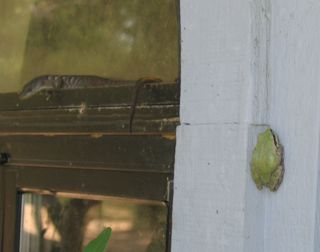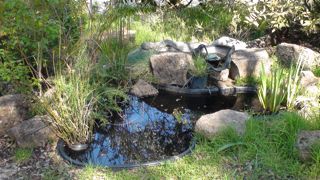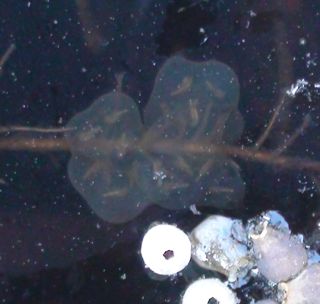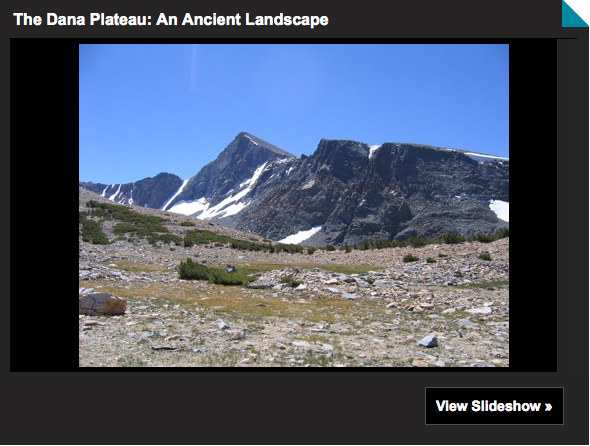 During my first thru hike on the John Muir Trail almost fifteen years ago, on the ascent up to Seldon Pass I encountered a young man energetically trotting down the trail without a backpack. Before even saying hello he asked excitedly, “have you seen any frogs?” The question was a strange greeting, but this researcher had luckily encountered a fellow frog enthusiast. Subsequently he revealed that he was a researcher studying frog populations in the Sierra Nevada. I wish I could recall his name, but his passion for frogs I remember well.
During my first thru hike on the John Muir Trail almost fifteen years ago, on the ascent up to Seldon Pass I encountered a young man energetically trotting down the trail without a backpack. Before even saying hello he asked excitedly, “have you seen any frogs?” The question was a strange greeting, but this researcher had luckily encountered a fellow frog enthusiast. Subsequently he revealed that he was a researcher studying frog populations in the Sierra Nevada. I wish I could recall his name, but his passion for frogs I remember well.
 Frog and Mantis ShowdownI’m not sure when my passion for frogs began—as a child of the 70s I’m sure watching Kermit the Frog on the Muppet Show had something to do with my interest. I spent countless hours searching the banks of the Concord River in Massachusetts looking for amphibians; as an adult, I wandered the high country in Yosemite near Tioga Pass looking for the Yosemite toad.
Frog and Mantis ShowdownI’m not sure when my passion for frogs began—as a child of the 70s I’m sure watching Kermit the Frog on the Muppet Show had something to do with my interest. I spent countless hours searching the banks of the Concord River in Massachusetts looking for amphibians; as an adult, I wandered the high country in Yosemite near Tioga Pass looking for the Yosemite toad.
In 2007, my partner and I constructed a frog pond at our home outside Yosemite (I need to give proper credit: he constructed it while I took the easy job and decorated it with plants). Our intent was to provide a proper habitat for the Pacific Chorus frogs that already lived in our yard. Instead of watching television on summer evenings, we would gaze at the chorus frogs catching moths on our window ledge. One memorable occasion, a chorus frog and a California mantis engaged in a standoff—neither one backed down and both eventually retreated. Another time an Alligator lizard and a chorus frog rested nearby each other on our windowsill.
 Alligator Lizard and Chorus Frog
Alligator Lizard and Chorus Frog
Build it and they will come. Only a few weeks after we erected the pond, I encountered a western toad at dusk heading toward the water with his peculiar walk. This March and April, during my visit home from Yellowstone, I listened to the distinct and loud “kreck-ek” of the Pacific Chorus Frogs day and night. Mary Dickerson, who authored The Frog Book in 1906, deemed the chorus frog the “entertaining little acrobat of the frog world” and described their song: “At dusk or on rainy days a loud resonant trill comes from the trees and vines. The sound has the charm of contentment in it; in fact it is much like the purring of a cat, only louder.”
 Our Backyard Frog Pond
Our Backyard Frog Pond
 Pacific Chorus Frog Eggs in Our PondMuch to my delight I also discovered chorus frog tadpole eggs in our pond during my visit (I love the Honduras word for tadpole: “bunbulun”). The tiny eggs grew rapidly during my stay at home, from small dots to wriggling miniatures.
Pacific Chorus Frog Eggs in Our PondMuch to my delight I also discovered chorus frog tadpole eggs in our pond during my visit (I love the Honduras word for tadpole: “bunbulun”). The tiny eggs grew rapidly during my stay at home, from small dots to wriggling miniatures.
I regretted having to return to Yellowstone before they hatched, but my partner Shad has promised to remain on tadpole watch and send photos as soon as they emerge. Below is a video of our frog sanctuary.
Despite the success of our backyard frog sanctuary, I am extremely worried about our frog friends across the globe. As Kermit the Frog sang, “It’s Not Easy Being Green.” Today, amphibians worldwide are disappearing at an unprecedented rate. I’ve written previously about the staggering declines of Yellow-legged frog in Yosemite and the Sierra Nevada, and the recent study in Yellowstone that showed decreases in 3 of the 4 amphibian species in the park. If frogs are having a difficult time surviving in some of the best-protected places on the planet, something is truly wrong. Here’s another alarming statistic: climate change, pollution, habitat destruction and disease have put over a third of the world’s amphibian species on the brink of extinction.
How can you help? Dr. Kerry Kriger, who is currently studying amphibian disease, founded a great organization: Save the Frogs. Visit the website to learn more about amphibian extinction and what you can do to help. Be sure to also mark your calendar so you can celebrate the first official Save The Frogs Day on April 28!

